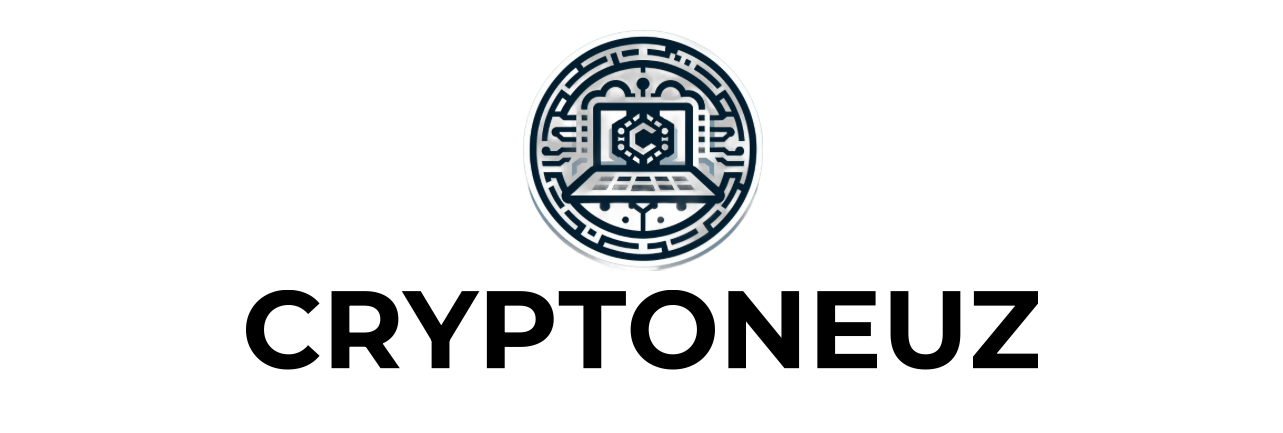What is Margin Trading? A Complete Guide on How to Trade on Margin
We will remove some of the margin trading misconceptions and some of the puzzles in margin trading in this post so you may decide whether this approach will help you reach your investing targets.
What is Margin Trading?
Another name for leveraged trading—the technique used to open a position in a financial market with a deposit—is margin trading. A trading broker acting on margin is basically lending you the whole value of the trade, thus demanding a deposit as security. The margin rate, stated as a percentage, defines the margin deposit—the sum of money you must deposit for your trade.
Say, for instance, you wish to purchase ten shares valued at $100 each. Should you purchase these from a traditional broker, you would have to pay the full $1000 upfront. You would just need to down $200 at a margin rate of 20% and still be exposed to the whole value of the trade.
Types of Margin Trading
Initial margin
The least amount you’ll need to deposit to open a position is the initial margin. It is sometimes known as just the deposit, or the margin deposit.
Maintenance margin
If your position swings against you, extra money your online broker could want from you is called the maintenance margin, sometimes known as variation margin. Its goal is to make sure your account has sufficient funds to continuously fund the current value of the position, thereby offsetting any running losses.
How does it Work?
Let us now go to a working example of this.
Though margin trading can be done on many asset classes, from FX to stocks to cryptocurrencies, we will use an imaginary “XYZ” stock in the example below. We will thereafter provide a sample from the BTCUSD chart later.
Assume you only have $5000 in investing money but wish to purchase 1000 XYZ shares at $10 per. Using a margined account, you can borrow half on margin to finish the transaction using the $5000 in cash. Without margin, sometimes referred to as a cash account, you would have to have the entire $10,000 in cash to buy stocks.
Let’s now consider how a margin loan can influence your XYZ stock returns.
Assuming the XYZ stock climbed from $10,000 to $11,000, you sell the transaction to exit. Making a 20% return on your $5000 investment, you would pay back the $5000 margin loan and profit $1000.
If you only placed your money on the line—that is, without using a margin loan—your $10,000 cash investment would have produced just 10% in profit.
When the value of the asset moves in your advantage, leverage is a great weapon. But it’s equally important to understand the negative side should the stock price collapse.
Let us review the same scenario once more; this time, let us take into account the reverse side.
If the XYZ stock you bought ranges from $10000 to $9000, your equity—that is, position value less loan balance of $5000—will come to $4000. Not to add transaction costs + the spread, this results in a 20% loss from a 10% decline in market value.
Furthermore, important to note is that, as long as the equity in your trading account meets the necessary level, margin loans do not have a fixed payback term.
Also Read: What is a Seed Phrase in Crypto Wallets?
Equity Requirement in Margin Trading
Let’s go over the basic criteria for a margin account. First you must deposit enough cash or qualifying assets to satisfy the initial margin criteria for your transaction before buying securities on margin. Although the asset class you are currently trading will affect these criteria; generally, you are required to maintain a specific margin account equity level.
Margin Level
Most brokerage companies automatically figure your margin level, therefore displaying the condition of a margin account. Represented as a percentage, it represents the ratio of equity to margin (Equity: Margin) used for your open positions.
In the case of a loss, or additional profit in the case of a profit, the account equity here is the balance less the loss. The Margin Level would then be Equity/margin X 100 would.
Possible Advantages of margin trading
1. Increasing your Purchasing Capability
Marginal trading offers one of its main benefits: leverage, which lets you borrow money to buy stocks. This method helps you to take bigger market positions than you could with just your capital by increasing your buying power outside your cash equity. Many investors looking to optimize their gains find it appealing since the capacity to use funds might result in higher returns.
2. The possibility for more Earnings
Should your investments yield good results, using borrowed money can increase your earnings. Margin trading greatly increases your returns in a rising market by letting you manage a bigger investment portfolio with somewhat little capital. Though the possibility for profit is great, it is important to keep conscious of the hazards involved, which can rapidly transform possible gains into large losses.
3. Grabbing Market Prospects
Margin trading offers unmatched freedom to seize market opportunities rapidly. More purchasing power will enable you to react quickly to favorable market conditions, therefore improving the results of your investments. In fast-moving markets, where timely investments can greatly affect results, this flexibility is very helpful.
Risks of Margin Trading
1. Magnified losses: the other side of leverage
Leverage increases losses even if it gives the possibility for higher profits. Should the market turn against you, you could suffer losses significantly more than your initial outlay, therefore causing a major financial setback. This emphasizes the need of realizing market trends and being ready for negative changes in the market.
2. Risk of margin calls: maintaining above mandated equity levels
A margin call is the result of your account’s value declining below the broker’s mandated minimum equity level. Should this occur, you will have to sell securities or contribute more money to meet the shortfall. Ignoring a margin call could lead to the forced sale of your assets at a negative point of view, hence stressing the need of keeping a buffer and regularly checking your account.
3. Continuous cost of borrowing.
Using margin borrowing results in interest expenses, which over time could compromise your profitability. These continuous interest expenditures have to be considered into your whole investment plan so that the possible returns exceed the expenses. Maintaining a sustainable investing strategy depends on your knowing of how these expenses will affect your long-term financial objectives.

What is a Margin Call and how can one Avoid it?
A margin call is a warning that your deal has turned against you and that you now lack adequate money to offset losses. When the equity in your margin account gets too low to support your borrowing, a margin call results. Stated differently, your broker is ready to lend you the utmost amount it can, so you have to add cash or exit positions to stop more losses.
Assume your broker sets the margin call percent to 40%; your present margin level is at 120%.
To prevent account liquidation as a trader, make sure your margin level never falls below the margin call percentage.
You should not dismiss a margin call and act nothing when you get one. This may result in a margin closeout, whereby your broker closes your trades and you run the danger of losing everything.
Using a stop order, topping up the account, or closing positions to lower margin requirements will help you avoid a margin call by use of risk management instruments. Prepare for the worst case situation; markets are erratic and very difficult to forecast with any degree of accuracy.
Stake, Leverage, Value USD and Total Percentage Loss (Liquidation%)
Now, let the entire loss percentage not intimidate you. Knowing this will force you to have more money put into your trading account for your trades to withstand the more frequent deep swings in various asset classes, particularly cryptocurrencies.

Applying sensible risk and money management techniques, the aforementioned chart allows you to fairly size your position per transaction.
What are the Differences between Margin and Leverage?
Leverage and margin are rather closely linked. Opening a leveraged trade requires you to lay down a margin deposit. For a fraction of the initial cash outlay, this deposit exposes you to a bigger position. One expresses the margin rate as a percentage, say 10%. Leverage, on the other hand, is stated as a 10:1 ratio.
Depending on the market, your margin rate on a $1000 job might be 10%. Your deposit in this situation is $100. The leverage ratio is 10:1 as this deposit exposes you ten times its size. Your leverage ratio for a margin rate of 5% is likewise 20:1.
How to Trade on Margin?
Buying on margin in the world of conventional investing is borrowing money from a broker to buy a stock. You can trade derivatives, including contracts for difference (CFDs), using margin. CFDs let you trade on the price movement of stocks, commodities, currency, indices, and cryptocurrencies.
Trade on margin using the following guidelines:
First Step: Open a margin account.
You must have a margin account, a certain kind of account, if you wish to trade on margin.
This is an account with your broker, who has agreed to lend you money to apply leverage and boost the value of your transactions. Using margin accounts increases any possible losses at the same time as it increases the scale of possible gains. Binance is one of the popular and verified brokers around.
You might borrow up to 50% of the acquisition price of the shares using a stock brokerage margin account. You can borrow even greater quantities with a CFD margin account.
Second Step: Make deposits in compliance with broker’s requirements.
Third Step: Select an asset to margin trade on.
Fourth Step: Meet a margin maintenance requirement.
Always make sure your margin account has adequate money to support all of your trading positions. Stated differently, your equity should constantly cover 100% of the margin.

Frequently asked questions
1. What does Margin Trading Mean?
Margin trading is putting down a deposit to open a trade with a far higher market exposure. Your broker will then credit your account with the whole trade value. As security, this will call for a margin deposit.
2. What is a Margin Deposit?
The margin deposit is what you will need to fund your deal. It is defined by the margin rate which is expressed as a percentage.
3. What is Maintenance Margin?
Should the position you have chosen turn against you, your online broker could ask for an additional sum of money known as the maintenance margin. The money guarantees always enough availability of funds to support the present value of the position. It also addresses any running losses you could run across.
Conclusion
Although margin trading presents more market flexibility and possible rewards, it is important to know and control the related dangers. You can more effectively negotiate the complexity of margin trading by using techniques such as diversifying your portfolio, creating stop-loss orders, and routinely checking your margin account. Like any investment plan, it’s important to balance the possible benefits against the risks and make wise choices in line with your investing objectives. This kind of learning guarantees that you stay aware, and ready to properly seize market prospects.






